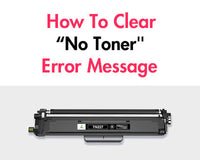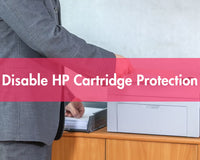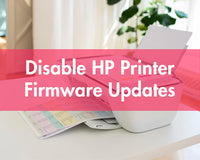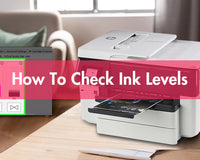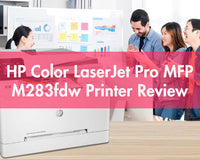The printing landscape has changed significantly in recent years, providing consumers with a range of options to suit different budgets, print volumes, and quality requirements. Ink tank printers have become popular for their economical, high-volume printing capabilities, while traditional inkjet printers continue to be favored for their compact design and reliable photo quality. While both use ink to produce high-quality prints, they differ significantly in terms of cost, print quality, maintenance, and long-term value. In this article, we'll take a deeper look at the differences between ink tanks and inkjets, compare their pros and cons, and help you decide which one is best for your printing needs.
What Are Inkjet and Ink Tank Printers?
Many consumers are often confused by the terms "ink tank" and "inkjet" when purchasing a printer. Ink tank printers are technically a subset of inkjet printers, but the term "inkjet printer" is commonly used to refer to cartridge-based models. The core difference between them lies in the ink delivery system design.
1. Inkjet Printers
Definition and Features: Inkjet printers are devices that spray liquid ink in fine droplets onto paper through a series of nozzles. They typically use small-capacity ink cartridges and are known for their high print quality, making them ideal for printing photos, color documents, and graphics. Inkjet printers are designed to be compact and easy to use, with low printing noise. Their versatility makes them well-suited for both home and small office environments, effectively meeting general printing needs.
How They Work: Inkjet printers spray ink to form patterns or characters by heating or vibration. The two most common inkjet technologies are thermal bubble inkjet (heat resistors vaporize ink to create bubbles, ejecting droplets via pressure) and piezoelectric inkjet (use piezoelectric crystals to deform and squeeze ink chambers, precisely controlling droplet size.)
2. Ink Tank Printers
Definition and Features: Ink tank printers use large-capacity ink tanks to store and supply ink, instead of relying on individual cartridges like traditional inkjet printers. The ink tanks are refillable with bottled ink, reducing the need for frequent cartridge replacements and lowering overall operating costs. Key features include high-volume printing capability, cost efficiency, and the convenience of easy refilling — making them both user-friendly and eco-friendly.
How They Work: Ink tank printers use a Continuous Ink Supply System (CISS), which delivers ink directly from the reservoirs to the printhead. When a print command is issued, the printhead sprays microscopic ink droplets onto the paper through nozzles, forming text or images. This technology was developed to meet the growing demand for low-cost, high-volume printing without sacrificing quality.
3. Structural Feature Comparison
|
Feature |
Ink Tank Printer |
Cartridge-based Inkjet Printer |
|
Image |
 |
 |
|
Ink Delivery |
External transparent tanks |
Replaceable cartridges |
|
Ink Type |
Primarily dye-based ink |
|
|
Printhead Design |
Separate printhead (independent of tanks) |
Integrated (cartridge + printhead) or split design |
|
Refill Method |
Bottled ink directly poured into tanks |
Replace entire cartridge |
|
Example Brands |
Epson EcoTank, Brother INKvestment series |
HP DeskJet, Canon PIXMA series |
What's the Difference Between Ink Tank and Inkjet Printers?
When choosing between Ink tank and Inkjet (Cartridge-based) printers, it's essential to understand their differences across key factors like price, cost, print quality, speed, functionality, and maintenance. Here's a detailed comparison to help you make an informed decision.
1. Price: Initial Purchase Cost
|
Aspect |
Ink Tank Printers |
Inkjet Printers |
|
Entry-Level Models |
$200-$300 (e.g., Epson EcoTank L3210) |
$50-$100 (e.g., HP DeskJet 2722) |
|
Mid-Range Models |
$300-$500 (e.g., Canon G6020) |
$100-$200 (e.g., Canon PIXMA TR4720) |
|
High-End Models |
$500+ (e.g., Epson EcoTank ET-16650) |
$200+ (e.g., HP OfficeJet Pro 9015) |
Ink tank printers tend to have a higher initial cost, typically ranging from $150 to $400, especially for high-end or multifunction models. In comparison, inkjet printers are more affordable, with prices ranging from $50 to $150, making them an attractive option for home users or students with limited budgets.
👉 If your priority is minimizing the upfront cost, an inkjet printer might be the more appealing choice. However, in the long run, ink tank printers often have a lower total cost of ownership (TCO) due to their lower ink costs and higher printing efficiency.
2. Cost: Ink and Consumables
|
Aspect |
Ink Tank Printers |
Inkjet Printers |
|
Ink Capacity |
50-100ml per color |
5-10ml per cartridge |
|
Cost of Ink |
High (replacement cartridges can cost $20-$50 each) |
Low (refill bottles typically cost $10-$30) |
|
Cost per Page (Black) |
$0.003-0.005 |
$0.10-0.15 |
|
Cost per Page (Color) |
$0.008-0.015 |
$0.25-0.40 |
|
Page Yield |
Low (Most cartridges yield around 200-300 pages) |
High (Ink tank refills can last up to 6,000-7,000 pages) |
Ink tank printers offer lower ink costs thanks to their high-capacity refillable ink systems. For example, the Epson 502 ink series can produce thousands of pages at a much lower cost per page. In contrast, while inkjet printers are more affordable upfront, they generally have higher long-term ink costs. The smaller capacity of ink cartridges means they need to be replaced more frequently, driving up overall expenses over time.
👉 If you print more than 100 pages per month, an ink tank printer can save a lot of money on ink costs. Inkjet printers with their limited cartridge capacity may seem economical initially, but maintenance costs tend to be higher in the long run.
3. Print Quality: Text and Photos
|
Aspect |
Ink Tank Printers |
Inkjet Printers |
|
Text Quality |
Excellent (Sharper and consistent) |
Good (Dye-based ink may smudge) |
|
Photo Quality |
Average (Suitable for standard color images) |
Excellent (Ideal for professional-grade photos) |
|
Color Accuracy |
Good but may vary depending on ink quality |
High, especially with dye-based ink |
|
Print Durability |
Excellent (Water and fade resistant) |
Average (Dye-based ink fades more easily) |
|
Print Media |
Limited (some models) |
Better (e.g., glossy/matte paper, stickers) |
Inkjet printers mostly use dye-based ink, which can produce brighter colors and richer details on photo paper, making them an ideal choice for photographers. In contrast, ink tank printers often use pigment-based black ink, which adheres well on regular paper and is less prone to smudging, with sharper and clearer text.
👉 If your primary printing needs involve documents and everyday materials, an ink tank printer is likely the better option. However, if you mainly print photos, promotional materials, or color images, an inkjet printer is more appropriate.
4. Print Speed and Capacity
|
Aspect |
Ink Tank Printers |
Inkjet Printers |
|
Black & White Speed |
10-15 pages per minute (ppm) |
8-12 ppm |
|
Color Speed |
5-8 ppm |
4-6 ppm |
|
First-Page-Out Time |
8-10 seconds |
10-15 seconds |
|
Monthly Duty Cycle |
Higher (up to 5,000 pages) |
Lower (100-500 pages) |
|
Suitable For |
High-volume home and office use |
Low-volume home use |
Inkjet printers tend to print more slowly, especially when handling high-quality photos or complex graphics, and the ink may require some drying time before handling. In contrast, ink tank printers are designed for high-volume printing and typically offer faster print speeds, especially for black-and-white documents and standard color printing.
👉 An ink tank printer is a better choice if you are concerned about print speed or need to print in bulk. While ink cartridge printers are generally slower, they are still sufficient for most home printing needs.
5. Maintenance and Durability
|
Aspect |
Ink Tank Printers |
Inkjet Printers |
|
Printhead Clogging |
Rare (automatic cleaning system) |
Common (requires manual cleaning) |
|
Refill Process |
Easy (bottled ink with anti-spill design) |
Messy (requires cartridge replacement) |
|
Ink Drying |
Less likely (sealed tanks) |
Likely (cartridges dry out faster) |
|
Waste Ink |
Minimal (efficient ink usage) |
High (up to 20% ink wasted in cartridges) |
|
Overall Lifespan |
Longer (with proper maintenance) |
Shorter (due to wear and tear on cartridges) |
Ink tank printers are relatively easy to maintain due to the large-capacity ink system. They only require occasional ink refills, eliminating the need for frequent cartridge replacements. In comparison, inkjet printers are more complicated to maintain, and you need to replace the ink cartridges regularly. In addition, if you don't use it for a long time, the printheads may clog and dry out, requiring cleaning.
👉 Ink tank printers also require regular cleaning of the printheads, but the overall maintenance frequency is lower. Inkjet printers, on the other hand, require frequent maintenance to prevent clogging and drying out. Therefore, ink tank printers have more advantages in maintenance and convenience.
Ink Tank vs. Inkjet Printers: Which to Choose?
Based on the detailed comparison across various aspects, we've prepared a quick reference table summarizing the strengths and weaknesses of Ink tank and Inkjet printers. This will help you make an informed decision based on your specific needs.
|
|
Ink Tank Printers |
Inkjet Printers |
|
Pros |
✔️ Lower cost per page ✔️ Large ink capacity ✔️ Fewer refills and less maintenance ✔️ Ideal for high-volume printing |
✔️ Lower initial cost ✔️ Compact and lightweight ✔️ Excellent photo printing quality ✔️ Better for low-volume and occasional printing |
|
Cons |
❌ Higher upfront cost ❌ Bulkier design ❌ Color depth may be slightly lower than high-end inkjets |
❌ Higher cost per page ❌ Frequent cartridge replacement ❌ Susceptible to printhead clogging if left unused |
How to Make Your Choice?
When choosing between an ink tank and an inkjet printer, consider the following factors:
- Print Volume: If you print frequently or in high volumes, the lower running costs and larger ink capacity of an ink tank printer can offer significant savings.
- Quality Requirements: For professional photo printing or detailed graphic work, an inkjet printer might be more appropriate due to its excellent resolution and color accuracy.
- Budget Considerations: Evaluate both the upfront cost and long-term expenses. Inkjet printers may seem economical initially, but their ongoing ink replacement can drive up costs over time.
- Maintenance and Convenience: Consider how often you are willing to manage ink replacements or refills. Ink tank systems typically reduce the hassle by minimizing the frequency of maintenance.
Which One Should You Choose?
Choose an Inkjet Printer If:
- You print occasionally (less than 100 pages per month).
- You need a printer for high-quality photo prints.
- You want a low-cost printer for light home use.
Choose an Ink Tank Printer If:
- You print frequently (300+ pages per month).
- You need low-cost, high-volume printing.
- You want to minimize maintenance and refilling.
Final Verdict
In summary, both ink tank and inkjet printers have their own set of advantages. Inkjet printers are affordable, versatile, and great for printing high-quality photos – but they can be expensive to maintain in the long run. Ink tank printers require a higher initial investment but offer lower long-term costs, making them ideal for users with high-volume printing needs.
Your final choice should align with your specific printing needs, budget constraints, and the importance you place on print quality versus cost efficiency. As printing technology continues to evolve, keep an eye on emerging trends and improvements that may further influence your future decisions. By weighing your printing needs against the pros and cons of each system, you can make a choice that not only meets your requirements but also supports an efficient and cost-effective operation.
